Forest Information Billboard
Issue 4, December 2016

Line

SAVE THE DATE
28 March 2017: Team of Specialists on Forest Products Statistics
29 – 31 March 2017: 39th Session of the Joint ECE/FAO Working Party on Forest Statistics, Economics and Management, Geneva, Switzerland, http://www.unece.org/forests/wpfsem2017
9 – 13 October 2017: Lasy2017 - the joint 75th session of the ECE Committee on Forests and the Forest Industry (COFFI) and the 39th session of the FAO European Forestry Commission (EFC), Warsaw, Poland, http://www.unece.org/forests/lasy2017
Forest reporting
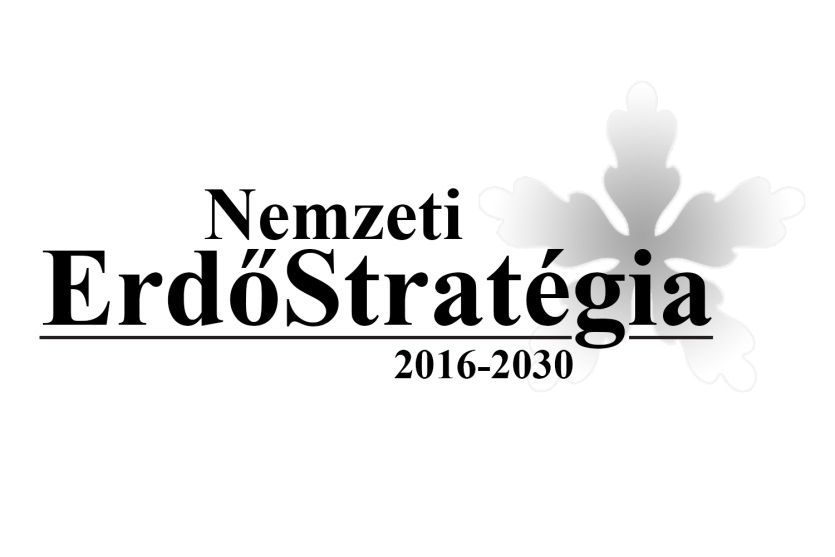 Hungary - National Forest Strategy 2016-2030
Hungary - National Forest Strategy 2016-2030National Forest Strategies are widely considered important tools to promote sustainable forest management (SFM) worldwide. Hungary has always been devoted for promoting and applying SFM in its forests since modern forest management started. As such by the end of 2015, after the National Forest Program 2006-2015 ended, following its main objectives and achievements, considering its utility, the development of a new, long-term forest strategy started.
The new “National Forest Strategy 2016-2030” (NFS) follows the EU Forest Strategy and was implemented in 13 October 2016 as a ministerial decree. It assists and enables the forests’ multiple function’s maintenance providing a balanced impact on environment, society and economy. As such the NFS highly designates objectives to:
- Development of state forest management
- Development of private forest management
- Rural and regional development, afforestation, conservation of forests
- Nature protection in forest
- Modern forest protection
- Sustainable game management
- Rational wood utilization
- Tasks of the forest administration
- Research, education and production development
- Efficient communication about the forest to improve man-forest relations
Thus the NFS remains the high political commitment for sustainable forest management and responses to emerging challenges (e.g. climate change or wood supply), ensuring the conservation and enrichment of the forest, the reduction of the impacts of climate change or considering the forest ecosystems and habitat impacted by natural factors and human intervention. In addition, there is an increasing social support for efforts promoting nature conservation in forests and the expansion of close-to nature forest management.
Line
 International survey on conservation and sustainable use of forest resources
International survey on conservation and sustainable use of forest resourcesAs part of the GenTree project, a survey has been launched to collect perspectives of different stakeholders, mainly practitioners and policy makers, on aspects related to conservation and sustainable use of forest resources, in particular their genetic (intraspecific) diversity. It is available in multiple languages (7). We have already received a good number of responses overall, however, we have a low number of answers from tree breeders, nurseries, forest industry and from central European countries. Please share it with relevant contacts http://www.gentree-h2020.eu/news/article/international-survey-on-conservation-and-sustainable-use-of-forest-resources/
Line (copy 25)
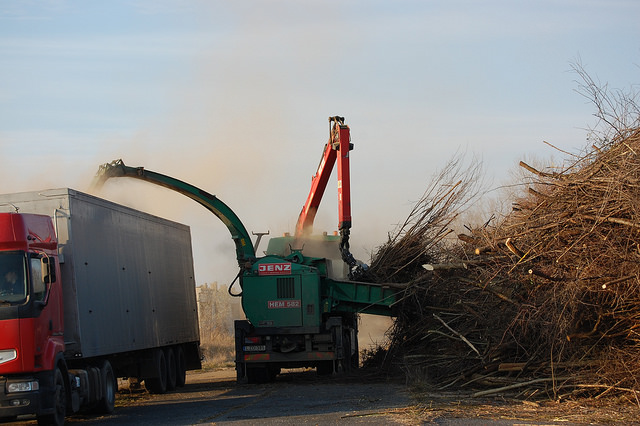 Bioenergy - the leading renewable energy source
Bioenergy - the leading renewable energy sourceIn 2014, renewable energy accounted for 14% of the world’s global total primary energy supply, according to the International Energy Agency. Solid biofuels represented the largest share of this, amounting to 44.5% in the EU. These are any renewable, biological material used as fuel such as wood, sawdust, leaves, and even dried animal dung, but the majority of biofuels are derived from wood. The use of wood as a fuel for cooking, heating, and other applications dates back to when Neanderthals learned how to start a fire. Today biomass is still the primary fuel for domestic use in many developing countries and it is also the leading renewable energy source in the UNECE region.
Many countries lack adequate bioenergy data. In addition, often production data do not match consumption estimates coming from household surveys. To address these issues UNECE and FAO, jointly with IRENA, organized a capacity building workshop on information on bioenergy from the forest sector in Budapest from 6-8 December. The aim of the workshop was to improve renewable energy statistics and analysis by comparing national experiences and hearing about best practices. Ms. Milka Mumovic of the Energy Community called during the workshop for estimates based on consumption surveys to obtain more realistic figures on production of energy from solid biofuels. For example, since 2005 many countries have been revising estimates of bioenergy from wood, showing consumption figures much higher - up to five times previous values. [UNECE News Release] [Workshop Website][Thematic Website] [More Heat Less Wood Video] [IRENA Website]
Line (copy 1)
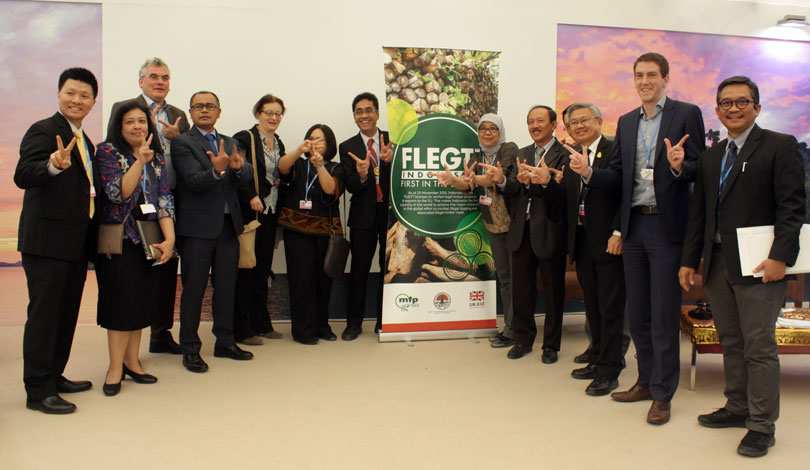 The wait is over. FLEGT licenses are here
The wait is over. FLEGT licenses are hereIndonesia and the EU are hailing “a major milestone” in the global fight to end illegal logging, with the launch of Indonesia’s FLEGT licensing scheme for exports to the EU of verified legal timber products.
The FLEGT licensing scheme is the first of its kind in the world, and is the result of a Voluntary Partnership Agreement (VPA) between Indonesia and the EU. The VPA parties expect FLEGT licensing to increase trade in legal, licensed timber while closing the EU market to unlicensed products.
From 15 November 2016, all timber product types listed in the VPA and directly exported to the EU must be accompanied by a FLEGT licence. Competent Authorities in EU Member States will deny entry to any such products exported from Indonesia to the EU without a valid FLEGT licence.
The FLEGT licence automatically meets the requirements of the EU Timber Regulation, which prohibits operators in the EU from placing illegally harvested timber and products derived from illegal timber on the EU market. Importers of FLEGT-licensed timber products can place their imports on the EU market without the need to conduct further due diligence.
Full article: http://www.flegt.org/news/content/viewItem/Indonesia-and-EU-launch-FLEGT-licensing-for-legal-timber-to-combat-illegal-logging/15-11-2016/55
Line (copy 2)
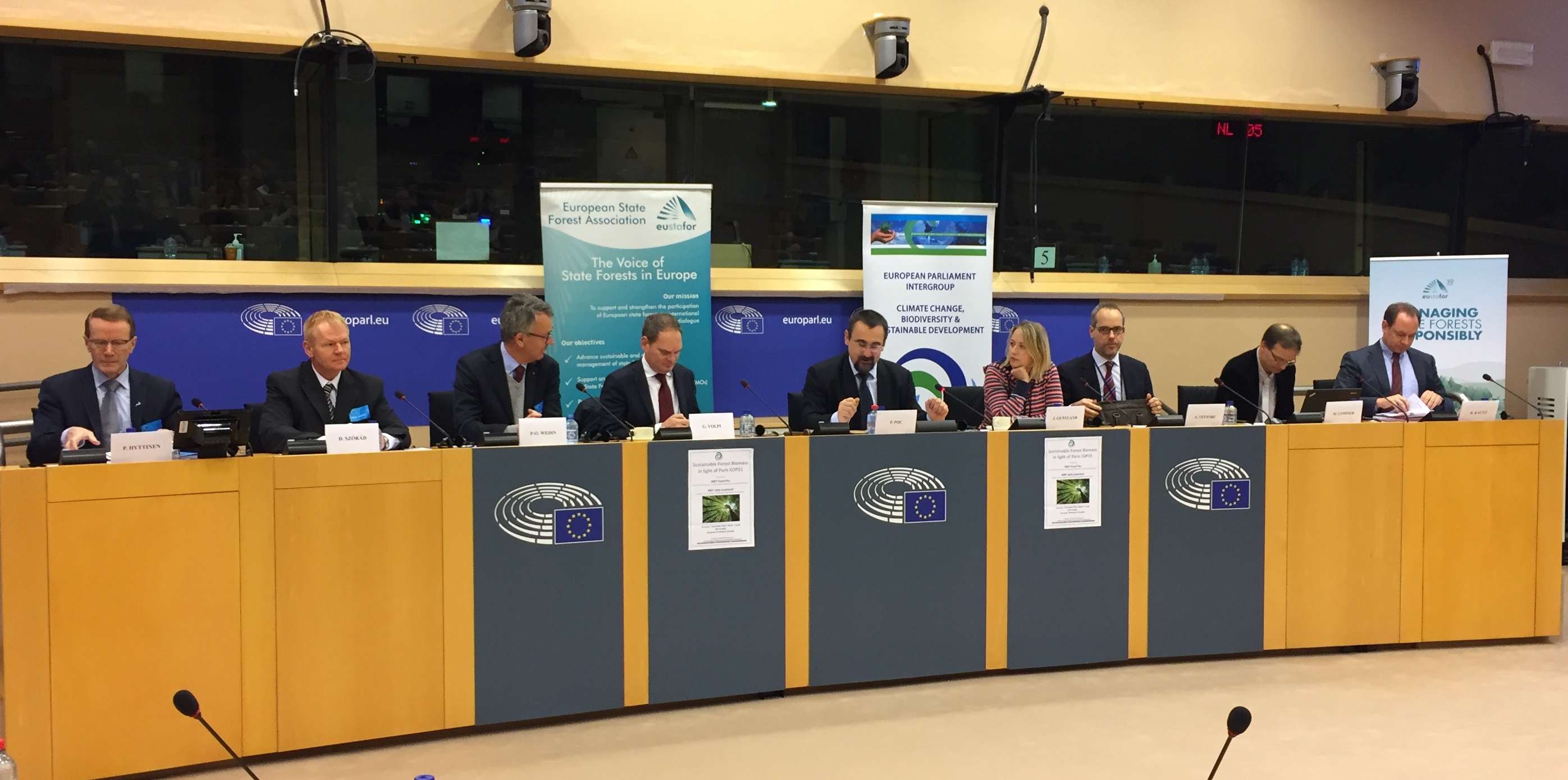
Forests & energy: strong synergy for the climate and the environment
“The Paris Agreement is a bridge between today's policies and climate-neutrality before the end of the century” claims the European Commission. Nowadays in the European Union a large part of energy from renewables is sourced by bioenergy, and to reach ambitious climate and energy targets more forest biomass for bioenergy is needed, as well as more efficient pathways for energy production.
Recently, the European Commission communicated “The Clean Energy for All Europeans” legislative package that covers many aspects related to energy policy, including governance rules for the Energy Union. It recognizes forest biomass as an important energy source.
The role of forest management is taken into account, since the sustainability of fuels from forest biomass is addressed by proposing a risk-based approach that consists of evaluating whether existing legislation and tools respond to certain sustainability requirements. However, we need to avoid that “the policies under development do not create negative or perverse results, not only for forests and the forest-based sector themselves, but also for their potential contribution to the post-2020 climate and energy targets,” emphasized Per-Olof Wedin (President of EUSTAFOR) during the conference “Sustainable forest biomass in the light of COP21” at the European Parliament (EUSTAFOR Press Release).
Forest biomass is one of several forest ecosystem services, and its sustainability has to be considered in the framework of Sustainable Forest Management. Forests mitigate climate change by sequestrating carbon from the atmosphere and substitute for fossil fuels and materials. This should be reflected in post-2020 climate and energy policies. The sustainability of forest management in Europe is covered by a number of national legislations and management plans which are consistent with the sustainability principles developed by FOREST EUROPE. The sustainability of forest biomass is often further confirmed through certification schemes.
Line (copy 4)
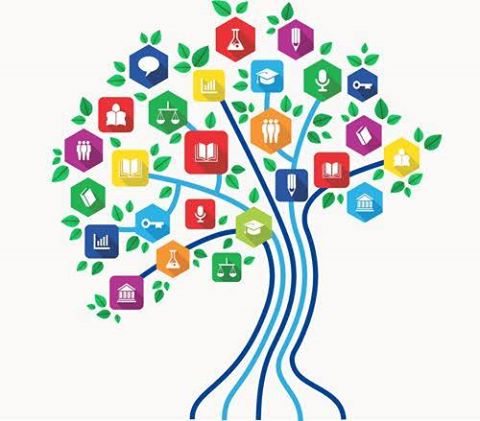 New Database: Forestry Education at Your Fingertips
New Database: Forestry Education at Your FingertipsThe Global Forest Information Service (GFIS) in collaboration with the Joint IUFRO-IFSA Task Force on Forest Education have partnered to create a space dedicated to global forest-related education: http://www.gfis.net/gfis/education/
This tool, which provides quick access to over 900 forestry-related university programs (BSc, MSc, and PhD) at more than 400 institutions worldwide, is intended to enhance forestry students' mobility and to promote forestry education activities online.
In the next year, the database will evolve into an interactive tool connecting users with continuously updated education-related content including: news, research blogs, online courses and webinars, scholarship and mobility opportunities, research contracts, internships, open-access publications, theses, and more.
This page is currently in Beta. Check back in the near future to see what new changes are being made. We are inviting the schools to also share education related content via the GFIS gateway. This content will include: external news, research blogs, scholarship and mobility opportunities as well as open-access publications and thesis.
Find out more at: http://www.iufro.org/science/task-forces/forest-education/forest-education-database/
Line (copy 3)
 What can we learn from Pippi Longstocking?
What can we learn from Pippi Longstocking?– A Blog Article by Christian Friis Bach
“Using wood for building houses is not something of the past. It is increasingly the future. Wood is a renewable, recyclable and a natural raw material that can be used to create modern and comfortable living spaces. At the same time, it can play a significant role in the transition to an inclusive green economy, supporting livelihoods and reducing global greenhouse gas emissions.”
Read more about how the increased use of wood in construction can help us tackle climate change in an article by Christian Friis Bach published on his own blog on 17.11.2016. Christian Friis Bach is the Executive Secretary of the United Nations Economic Commission for Europe (UNECE).
Line (copy 5)
 Guaranteed quality. 20 years of testing in the ITD’s accredited laboratory
Guaranteed quality. 20 years of testing in the ITD’s accredited laboratoryIn November 2016 the Testing Laboratory of Wood, Wood-Based Materials, Packaging, Furniture, Construction and Woodworking Machines in Wood Technology Institute in Poznan celebrates twenty years of its accredited activity.
The PCA (Polish Centre for Accreditation) accredited Testing Laboratory (No. AB 088) performs tests in legally regulated areas (where it fulfils additional legal requirements for conformity assessing bodies) as well as in voluntary areas.
The Testing Laboratory is divided into 9 section, in which are tested: wood, wood-based materials, furniture, packaging, wooden structures, solid biofuels, combustibility, the air quality, conservation and preservation of wood and wood-based materials, and woodworking machines, as well as carries out wood taxonomy. All the procedures are in accordance with documented test methods and based on the requirements of national, European and international standards.
Based on the Regulation (EU) No 305/2011 of the European Parliament and of the Council of 9 March 2011 laying down harmonised conditions for the marketing of construction products and repealing Council Directive 89/106/EEC, the Testing Laboratory performs the assessment of constancy of performance of: wooden floors, flooring (panels, parquets, linings), surfaces of sports areas, and dowel connectors for wooden structures. The assessment is based on tests performed according to harmonised standards.
The Testing Laboratory performs over 3000 commissions annually according to 120 accredited test methods. The high quality of services rendered by the Testing Laboratory is guaranteed by qualified and experienced personnel, who continuously upgrade their skills.
More information: www.itd.poznan.pl
Reported by: Anna Gałecka, Zofia Wawrzynkiewicz
Line (copy 6)
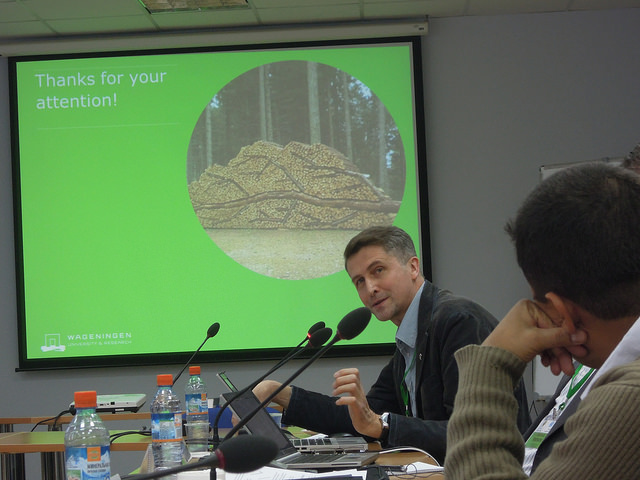 “Streamlining the next round of Forest Sector Outlook Studies in the UNECE region”
“Streamlining the next round of Forest Sector Outlook Studies in the UNECE region”The Joint UNECE/FAO Forestry and Timber Section and the Federal Forestry Agency of Russia organized the workshop on the 12-13th of December, 2016 in Pushkino the Moscow region, Russia.
27 participants discussed the former outlook studies conducted in Europe, North America and the Commonwealth of Independent States and how future studies could reflect different economic conditions and trends in sectors outside the forest sector (e.g. climate change, Sustainable Development Goals). The outlook studies are developed according to econometric models and can be attached to forecast forestry and timber development. They may be used as recommendations for policy makers.
Representatives of Russian federal and regional executive bodies, academia and business discussed experiences with experts from the UNECE/FAO Team of Specialists on Forest Sector Outlook from Finland, Germany, the Netherlands, Norway, Sweden and the USA. Experts presented a range of global trade and forest resource and the presentations can be found on the website of the meeting: www.unece.org/index.php?id=43170.
The workshop is likely to be the first step in defining the model which would serve best for the Russian Federation to develop a Russian Forest Sector Outlook Study. The participants highlighted that this tool should consider the features of the Russian forestry and timber sectors, and be targeted at the goals of the State programme of Forestry development 2013-2020.
 Прогнозирование развития лесного сектора в регионе ЕЭК ООН.
Прогнозирование развития лесного сектора в регионе ЕЭК ООН.Семинар по прогнозированию развития лесного сектора проведен совместной Секцией ЕЭК ООН/ФАО по лесному хозяйству и лесоматериалам и Федеральным агентством лесного хозяйства 12-13 декабря 2016 г. в г. Пушкино, Российская Федерация.
27 участников мероприятия рассмотрели опыт подготовки прогнозов развития лесного сектора в Европе, Северной Америке и СНГ, а также возможное влияние на будущие исследования тенденций в экономике и смежных с лесной отраслях (к примеру, касающихся климата или Целей устойчивого развития). Подобные прогнозы разрабатываются с использованием определённых эконометрических моделей и применяются для оценки перспектив развития лесного хозяйства и промышленности на региональном, национальном или местном уровне, что позволяет использовать их при построении государственных программ и дорожных карт.
В семинаре приняли участие представители Рослесхоза и подведомственных НИИ (ВИПКЛХ, ВНИИЛМ, СПбНИИЛХ), МИД России, Министерства природных ресурсов и лесопромышленного комплекса Архангельской области, а также бизнеса и общественных организаций. Мировым опытом поделились эксперты международных организаций ЕЭК ООН и ФАО, а также Германии, Нидерландов, Норвегии, США, Финляндии и Швеции. Презентации доступны на веб-страничке семинара: www.unece.org/index.php?id=43170.
В ходе работы семинара были представлены преимущества конкретных моделей прогнозирования, определены возможные проблемы и рассмотрены варианты их преодоления. Данный подход в перспективе позволит определить оптимальные для Российской Федерации методы прогнозирования развития отечественного лесного сектора. При этом участники семинара подчеркнули необходимость адаптации существующих моделей для должного учета специфики лесного хозяйства и лесной промышленности России, а также достижения задач, поставленных Государственной программой "Развитие лесного хозяйства 2013-2020".
Line (copy 7)
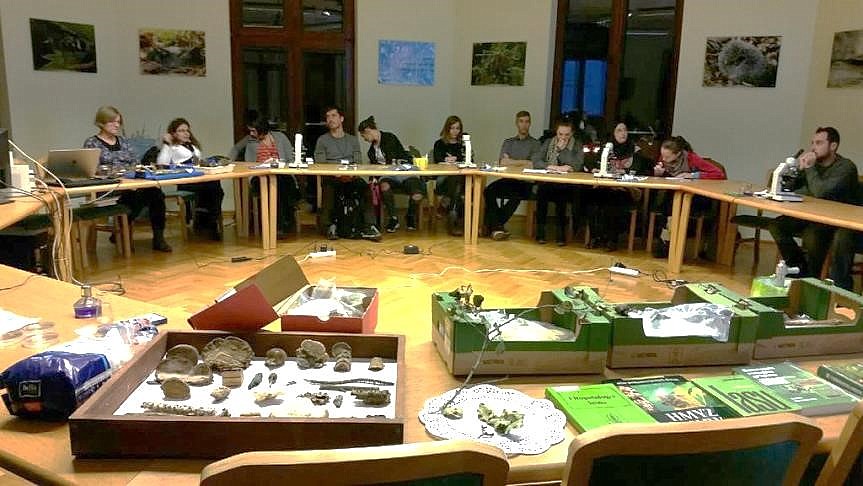 The identification of fungi in the framework of the COST international training school
The identification of fungi in the framework of the COST international training schoolThe COST international Training School devoted to the conventional diagnostic of pathogenic organisms was successfully organized in Forest Research Institute (IBL) in Poland last week (22-24.11.2016). The main topic of the meeting was „Fungal taxonomy and fungal identification using traditional techniques" in the light of the aims of the COST Action FP1401 GLOBAL WARNING “A GLOBAL NETWORK OF NURSERIES AS EARLY WARNING SYSTEM AGAINST ALIEN TREE PESTS”
Many recently introduced pests occurred to be harmful to European forests like Phytophthora ramorum, Fusarium circinatum or Dothistroma species. Other unknown organisms to science like Hymenoscyphus fraxineus were not regulated before they invaded European ash population.
Such a situation is frustrating and indicating that the current system to identify harmful species does not provide sufficient protection from invasions by alien pests and pathogens. The Global Warning COST Action gathered specialists mainly across Europe to mitigate current situation of endangered forest health. Also, the initiative to organize a Training School in Poland met needs of many young researchers at the beginning of their carrier.
The Action brings together detailed information about the international trade of plants for plantings and the emerging threats to native trees in Europe. Our Institute was very happy to host in 3 trainers from abroad: Dr René Eschen from CABI in Switzerland, prof. David Minter from CABI in Great Britain, and prof. Antonio Moretti from Consiglio Nazionale delle Ricerche in Italy, and 3 trainers from the Institute of Aviation in Warsaw, as well as 17 trainees from 15 countries (Croatia, Denmark, Estonia, Germany, Italy, Lithuania, Ireland, Poland, Serbia, Slovenia, Sweden, Switzerland, Tunisia, Turkey and Ukraine).
More information about the COST Action FP1401 can be found at http://www.ibles.pl/en/web/cost/globalwarning
Edited by: Justyna Nowakowska, assoc. prof. IBL, Polish coordinator of the COST Action FP1401
Line (copy 8)
 UNECE/FAO launch Accountability Systems for Sustainable Forest Management Project in the Caucasus and Central Asia
UNECE/FAO launch Accountability Systems for Sustainable Forest Management Project in the Caucasus and Central AsiaThe UNECE and the FAO are supporting capacity-building activities for the development of accountability systems for sustainable forest management (SFM) in five Caucasian and Central Asian countries. The joint UNECE/FAO Forestry and Timber Section has launched a three-year project that will support the development of national criteria and indicators for SFM in Armenia, Georgia, Kazakhstan, Kyrgyzstan and Uzbekistan. The project is funded through the UN Development Account (UNDA).
A regional workshop on the project was held in Yerevan, Armenia, from 15-18 November 2016. The workshop introduced the UNECE/FAO project to participants who are expected to undertake activities in their respective countries, introduced international criteria and indicators processes, offered examples from national criteria and indicator development in Austria, Estonia, Iran and the Russia Federation and provided a platform for countries to present their situations and experiences.
Out of the Caucasian and Central Asian countries, only Georgia participates in one of the international criteria and indicator processes (FOREST EUROPE), although none of the countries has developed criteria and indicators for national-level SFM, which the UNECE/FAO project is intended to support. The project also aims to stimulate exchange and cooperation among the five countries. Thus far, Georgia, which is 42% forested, is implementing SFM practices and principles, and Georgia, Armenia and Kyrgyzstan are establishing forest monitoring systems.
The project will help the countries to actively participate in international forest-related processes, contribute to the sustainable development of the forestry sector, and eventually monitor progress towards achieving the Sustainable Development Goals (SDGs). The project targets forest-related ministries, national forest agencies, research institutes and non-governmental organizations. [UNECE News Release] [Workshop Website] [Project Website]
Line (copy 9)
The 21st Century will be the Century of Wood
The 74th session of the ECE Committee on Forests and the Forest Industry (COFFI) was held in Geneva, Switzerland from 18 to 20 October 2016. The Committee reviewed and guided activities in data collection, analysis, policy support, capacity building and communication. In addition, the meeting had a focus on commercial aspects of the forest based industries. Half a day was dedicated to market discussions of these industries. Additional themes were forest ownership and green jobs in the region.
The 21st Century will be the century of wood - UNECE Press Release.
Line (copy 10)
 Measuring the value of forests in a green economy
Measuring the value of forests in a green economyOn 21 October 2016, the ECE/FAO Forestry and Timber Section organised a workshop on “Measuring the Value of Forest Sector in a Green Economy” in the framework of the implementation of the “Rovaniemi Action Plan for the Forest Sector in a Green Economy”, specifically Action E.2.3 “develop the forest sector’s contribution to broader green economy indicator sets”.
The workshop analysed the complementarity of present forest sector valuation systems (Forest Europe Criteria and Indicators for Sustainable Forest Management and the Montreal Process on Criteria and Indicators for the Conservation and Sustainable Management of Temperate and Boreal Forests) with approaches developed at the macroeconomic level in the context of the green economy and the 2030 Agenda for Sustainable Development.
The workshop was organised in partnership with the key organisations, active in the development of international measuring systems for a green economy: the Green Growth Knowledge Platform (GGKP), Organisation for Economic Cooperation and Development (OECD), The Economics of Ecosystems and Biodiversity (TEEB) Initiative at the United Nations Environment Programme (UNEP) and the Wealth Accounting and the Valuation of Ecosystem Services (WAVES) Partnership of the World Bank. Also the Statistical Divisions of UNECE and FAO were consulted and invited to provide their contributions to the discussion.
The information about the workshop outcomes can be found in the workshop report.
Line (copy 11)
Wood experiences a real renaissance as construction material. Architects of modern, multifunctional buildings choose wood as a renewable and low-carbon material. In addition to its technical features, wood is often favoured due to its capacity to create a pleasant atmosphere. The UNECE/FAO Forestry and Timber Section provided a platform for experts to exchange and promote the use of wood as construction material during its 2016 Committee meeting. New technologies make it possible that wood as construction material also breaks with old prejudices such as bad acoustics, building collapse during a fire, practicability in construction and durability.
Two examples of wooden buildings are situated in direct neighbourhood of the meeting’s venue at the Palais des Nations in Geneva. One is the newly built Conference Hall of the World Intellectual Property Organization (WIPO) and the second is the temporary building of the Opéra des Nations.
WIPO chose wood as construction material with the ambition to build an eco-friendly, visually attractive conference hall. Beneficial is that wood stores warmth and therefore lowers the heating costs of the great hall with 871 seats. Wood provides a comfortable atmosphere and an excellent acoustics due to perforation. The building was planned in detail with mechanisms in adaption to the case of fire.
The “Grand Théâtre de Genève”, the main Opera in Geneva closed for renovation. People of Geneva love their Opera though and the city council searched for a temporary substitute building which should not compromise the number of seats (1000). Glimpsing at the capital of neighbouring France they came up with an innovative solution. They recycled the structure of a temporary building used in Paris when its Comédie Française itself underwent renovations. The newly built “Opéra des Nations” opened its doors for the public in early 2016 and the audience praises the wooden building for its excellent acoustics. It is planned to reuse the building for another project after finalizing the renovation of the “Grand Théâtre de Genève”. [Pictures] [Meeting Website]
Line (copy 12)
 Sharing experiences and ideas for added-value of forest information
Sharing experiences and ideas for added-value of forest informationThe DIABOLO workshop on “Policy needs for and provision of forest information for policy making and practice in Europe” brought together policy makers, forest managers, data providers and key stakeholders from different levels and policy sectors to identify options for bridging “gaps” between forest information (data) demand and supply, and to suggest strategies on how to improve the knowledge communication and information exchange for bioeconomy outlooks.
Two main challenges were detected during the workshop:
First, the diversity and often conflicting of strategies and regulations relating to forestry on a European scale and hence diverse policy makers’ needs for information is a challenge for data providers, especially in the light of decreasing funding.
Secondly, the diversity and comparability of data over time and between the different European regions is a challenge for policy processes.
To overcome these challenges, the workshop outcomes offer three solutions:
1. A closer cooperation between EU member states and the European Commission for interpretation of national data, in accordance with the EU Forest Strategy;
2. An optimisation of National Forest Inventories value-chains and value-networks for various end-user needs at sub-national, national and international level to solve decreasing funding and
3. Knowledge sharing and developing joint efforts among data providers, in particular among the National Forest Inventories. Well-established collaboration as the European National Forest inventory Network (ENFIN) will facilitate the success of the effort.
The workshop was hosted at BFW, Austria in Vienna, 19-20 September 2016. [DIABOLO European Workshop Website]
Line (copy 13)
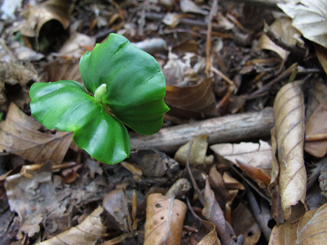 IUCN on track to give protected status to forest genetic conservation units
IUCN on track to give protected status to forest genetic conservation unitsThe World Conservation Congress, held in Hawai‘i in early September, adopted a motion calling for forest conservation units to be recognised with a new protection status, known in the motion as Protected Area Type IV. The motion, promoted by the French National Conservation Congress, will now be considered by national authorities and NGOs and is expected to help forest geneticists to work with conservationists to secure the long-term conservation of forest tree diversity essential for climate change adaptation.
Line (copy 26)
PLANFOR
The Platform of the Associations of Nature and Forestry- With the invitation of CARFU (The Foundation of the People Caring for Future) Nine NGOs from three countries (Turkey, Bosnia and Herzegovina and Albania) signed an MoU to work together on forestry, climate change and other relevant issues. The establishment of the Platform and the signing ceremony of the cooperation agreement was held on June 1, 2016 Wednesday at 2:00 pm at Sarajevo University Faculty of Forestry . More information in different languages can be found here http://www.carfu.org/?p=734
The press release is here http://www.carfu.org/wp-content/uploads/2016/06/PLANFOR-Press-Release.pdf
The Platform of the Associations of Nature and Forestry- With the invitation of CARFU (The Foundation of the People Caring for Future) Nine NGOs from three countries (Turkey, Bosnia and Herzegovina and Albania) signed an MoU to work together on forestry, climate change and other relevant issues. The establishment of the Platform and the signing ceremony of the cooperation agreement was held on June 1, 2016 Wednesday at 2:00 pm at Sarajevo University Faculty of Forestry . More information in different languages can be found here http://www.carfu.org/?p=734
The press release is here http://www.carfu.org/wp-content/uploads/2016/06/PLANFOR-Press-Release.pdf
Line (copy 14)
Development of forests and the gene pool of local forest tree ecotypes in Mongolia
Forest Management Institute Brandýs nad Labem, Czech Republic
In a view of global climate change, forests play a major role for Mongolian people. Forests are a source of precious water in an arid steppe-forest landscape. Mongolian forestry lacks tools for long-term sustainable management and a robust system that would ensure preservation of a gene pool of local tree ecotypes. It should benefit from a Czech project introducing these tools and central European forestry experience. Czech experts will help to stop diminishing of forest areas, devastation and exploitation of forests caused by fires, pests, illegal logging and desertification.
Within a framework of the project, Czech and Mongolian forestry experts elaborate tools for long term planning including a system for location, identification, and recognition of gene pools of indigenous trees species. Based on field surveys, they prepare educational materials and methodologies, and train local workers in routine work practices.
Model nurseries, both Sharyn gol and Darkhan with advanced container grown seedling technology are being established. A point is to use an own reproductive material of indigenous trees for highly demanded reforestation. Mongolian experts are trained in cone harvesting and seed operations. The Sharyn gol nursery will be serving as an educational and training centre for subtaiga and taiga sustainable management, forest protection and conservation.
There is an enormous chance to use this facility for international activities. In a beautiful, quiet, untouched and spiritual part of the Khenty Mountains, Mongolia, you can find new skills, inspiration and a rest as well. Additional information and contact at: www.forest4mongolia-cz.net Please contact us in case of your interest.
Forest Management Institute Brandýs nad Labem, Czech Republic
In a view of global climate change, forests play a major role for Mongolian people. Forests are a source of precious water in an arid steppe-forest landscape. Mongolian forestry lacks tools for long-term sustainable management and a robust system that would ensure preservation of a gene pool of local tree ecotypes. It should benefit from a Czech project introducing these tools and central European forestry experience. Czech experts will help to stop diminishing of forest areas, devastation and exploitation of forests caused by fires, pests, illegal logging and desertification.
Within a framework of the project, Czech and Mongolian forestry experts elaborate tools for long term planning including a system for location, identification, and recognition of gene pools of indigenous trees species. Based on field surveys, they prepare educational materials and methodologies, and train local workers in routine work practices.
Model nurseries, both Sharyn gol and Darkhan with advanced container grown seedling technology are being established. A point is to use an own reproductive material of indigenous trees for highly demanded reforestation. Mongolian experts are trained in cone harvesting and seed operations. The Sharyn gol nursery will be serving as an educational and training centre for subtaiga and taiga sustainable management, forest protection and conservation.
There is an enormous chance to use this facility for international activities. In a beautiful, quiet, untouched and spiritual part of the Khenty Mountains, Mongolia, you can find new skills, inspiration and a rest as well. Additional information and contact at: www.forest4mongolia-cz.net Please contact us in case of your interest.

Publications
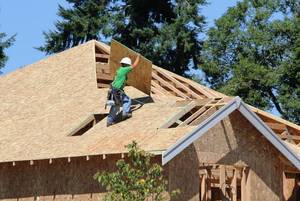 Wood production sees growth driven by housing and green energy markets
Wood production sees growth driven by housing and green energy marketsFAO data point at strong potential of forest sector in emerging bioeconomies
14 December 2016, Rome - Global production of all major wood products grew for the sixth consecutive year in 2015, while trade in wood products decreased slightly, according to new data published by FAO today. The increase was mainly boosted by the continuous economic growth in Asia, a recovering housing market in North America and scaling up of the bioenergy targets.
In 2015, growth in the production volume of wood products ranged from between one to eight percent, according to the FAO data unveiled today. Read the full article here. [FAOSTAT]
Line (copy 15)
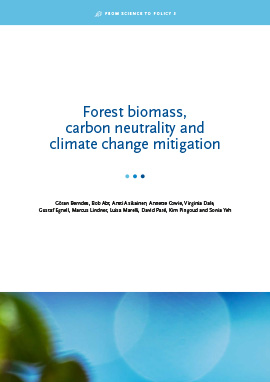 From Science to Policy 4: Forest bioeconomy - a new scope for sustainability indicators
From Science to Policy 4: Forest bioeconomy - a new scope for sustainability indicatorsBernhard Wolfslehner, Stefanie Linser, Helga Pülzl, Annemarie Bastrup-Birk, Andrea Camia and Marco Marchetti, European Forest Institute, 2016
European forests and the forest-based sector play a central role in a bioeconomy: they provide material (wood and non-wood), bioenergy and a wealth of other regulating and cultural ecosystem services. These demands need to be properly balanced, and many targets have to be tackled simultaneously.
In a situation with many possibilities, synergies, trade-offs and uncertainties, indicators can help to avoid unwanted impacts, and support successful and sustainable bioeconomy development. They can be used to inform policy makers, synthesize complex matters and act as tools for decision support. At present, however, there is a fragmented landscape of bioeconomy-related data and monitoring instruments.
The forest-based sector has the opportunity to take the lead in the sustainable development of the bioeconomy. It has powerful tools in place that can be adapted and further developed for application in the bioeconomy as a whole. These tools have to be state-of-the art and continuously developed: here the forest sector can be a forerunner and role model, shaping the bioeconomy debate and its monitoring and assessment.
This study provides insights into the potential use of forest-based sector indicator sets in Europe. It builds on the rich experience gained with sectoral indicator tools, and connects to aspects of policy research, operational research and sustainability science. It develops three different options or scenarios for how bioeconomy indicators can be designed in the future.
Download the study: http://www.efi.int/files/attachments/publications/efi_fstp_4_2016.pdf
Line (copy 16)
Available at: http://www.cifor.org/library/6136/planted-forests-in-emerging-economies-best-practices-for-sustainable-and-responsible-investments/
Investments in industrial-scale planted forests have grown exponentially in recent years and are included into investment portfolios for various reasons (e.g. diversification, risk mitigation, attractive returns). The rapid growth of planted forests may incur negative social and environmental impacts. Thus, investment companies and fund managers are increasingly interested in using sustainable and responsible investment (SRI) tools (e.g. standards, guidelines, and codes of conduct). However, a classification system for SRI tools in the field of planted forests still lacks consensus.
The present study therefore identifies, describes and analyzes SRI tools for planted forests and suggests a framework for the evaluation of their capacity to address environmental, social and governance (ESG) issues.
Four key findings emerged:
- More than 50 SRI tools are used to categorize investments in planted forest.
- An ESG Reference Document allows a quality assessment of the SRI tools to be undertaken. The most important issues highlighted in SRI tools are: legality, environmental impact and third-party certification. Conversely, issues such as poverty alleviation, minimum percentage of protected areas and prevention of encroachment are not properly addressed.
- SRI tools with the highest overall performance originate from the Forest Stewardship Council (FSC), Gold Standard, RepRisk, Certified B Corporation and FairForest.
- It is important that planted forests are evaluated either through specific SRI tools, or at least with appropriate consideration in order to properly address risk factors such as improvement of livelihoods and the prevention of encroachment and conflicts.
Line (copy 17)
Existing regulations are not enough to stem the global illegal trade in timber, which is shifting to countries with looser laws and to domestic, rather than international markets, finds a new report recently launched at the Conference of the Convention on Biological Diversity in Cancún, Mexico.
The most comprehensive scientific analysis of illegal logging to date, entitled “Illegal Logging and Related Timber Trade - Dimensions, Drivers, Impacts and Responses” also found evidence of increased involvement of organized criminal networks in illegal logging.
More than 40 renowned scientists from around the world, coordinated by the International Union of Forest Research Organizations (IUFRO) on behalf of the Collaborative Partnership on Forests (CPF), contributed to the study.
The scientists emphasize the need for more research and especially more data on the extent of the various illegal activities in order to better understand the different dimensions of illegal logging and related trade. The problem has gained new political momentum due to the fact that illegal logging has recently been acknowledged as a serious crime. Policy measures that fully address all dimensions of illegal logging are needed in order to provide for a sustained future of forests.
Download: http://www.iufro.org/science/gfep/illegal-timber-trade-rapid-response/report/
Daniela Kleinschmit, Stephanie Mansourian, Christoph Wildburger & Andre Purret (eds.), 2016. Illegal Logging and Related Timber Trade - Dimensions, Drivers, Impacts and Responses. A Global Scientific Rapid Assessment Report. IUFRO World Series Volume 35. Vienna. 148 p.
ISBN 978-3-902762-70-2 ISSN 1016-3263
Published by IUFRO
Line (copy 18)
The Austrian Research Centre of Forests (BFW) published a pamphlet on forests in climate change within the campaign “Forests fit for climate change” of the Federal Ministry of Agriculture, Forestry, Environment and Water Management.
Half of Austria is covered with forest land and timber is a stable element of the country’s economy. A big part of Austria is situated in the alpine region and will therefore face temperature changes significantly above the global average. A crucial factor to make forests fit for climate change is adaptive forest management.
The publication of BFW raises awareness on the impacts of climate change to forest ecosystems. An online platform by the Federal Ministry informs practitioners and climate protesters on latest research findings and political efforts. Austria is a pioneer country implementing successfully the concept of a cascading utilization of wood and wood products along the value-added chain. To secure long-term income and to safeguard stable forest ecosystems ensuring good air quality innovative approaches in the forest management, harvesting methods and processing industry are of utmost importance.
The BFW publication as download (German only) www.bfw.ac.at/cms_stamm/050/PDF/broschuere_klimaaktiverWald_fertig.pdf
The campaign website:
www.klimafitter-wald.at
https://www.bmlfuw.gv.at/english/forestry/Austriasforests/Forestsclimate.html
Line (copy 19)
 International WOOD MARKETS Group Inc. Presents:
International WOOD MARKETS Group Inc. Presents: WOOD MARKETS 2017
The Solid Wood Products Outlook to 2021
Detailed analysis of the North American wood products market offering a five-year forecast for supply, demand and prices, including mill operating rates and covers Lumber, OSB, Plywood, MDF and Particleboard.
Pricing and Brochure
o One complete report or;
o Volume 1: Softwood Lumber
o Volume 2: OSB & Plywood
o Volume 3: MDF & Particleboard
Available December 2016
https://www.woodmarkets.com/publication/5-year-outlook/outlook-to-2021/
Line (copy 19a)
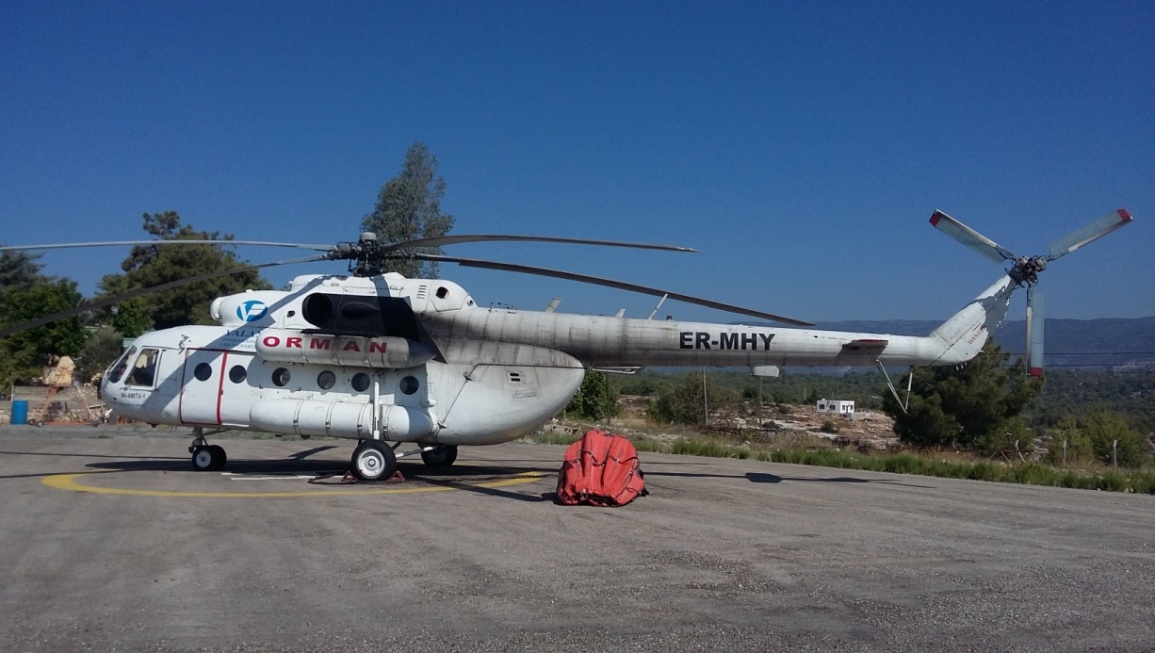 Economic Dimensions of Aerial Control of the Forest Fires in Mersin Regional Forest Directorate in Turkey
Economic Dimensions of Aerial Control of the Forest Fires in Mersin Regional Forest Directorate in Turkey
This postgraduate thesis deals with the economic analysis in productive stands was carried out by including costs of the planes and helicopters used for extinguishing the forest fires. According to the technical and economic data of Mersin Regional Forest Directorate in Turkey annually rented 2 helicopters for 4 months period, with a guarantee of 1 hour and 40 minutes flight per day, at a price of $5252.
On the Mersin Regional Forest Directorate's responsibility, the calculated results on hiring costs of 2 helicopters with a guarantee of 1 hour and 40 minutes flight per day for 2010-2014 period are given. Costs of helicopters and total hiring fees for 5 years are calculated to be 384.087.222.94 TL. Loss of forest growing stock yield in the region was also calculated to be 261.996.024.45 TL.
When 4.530.351.50 TL cost of reforestation added to loss of forest growing stock yield and helicopter hiring costs the total forest fire damage cost was calculated to be 654.718.958.35 TL. In order to strengthen and support the economic analysis all costs and benefits were taken into consideration during the calculations and Net Present Value (NPV) was computed at 3% interest rate for a 5-year period (2010 - 2014).
Prof.Dr.Özden GÖRÜCÜ & MSc.Ayfer TAŞELİ, Kahramanmaraş Sutcu Imam University, Institute of Applied and Natural Sciences, Department of Forest Engineering.
Events
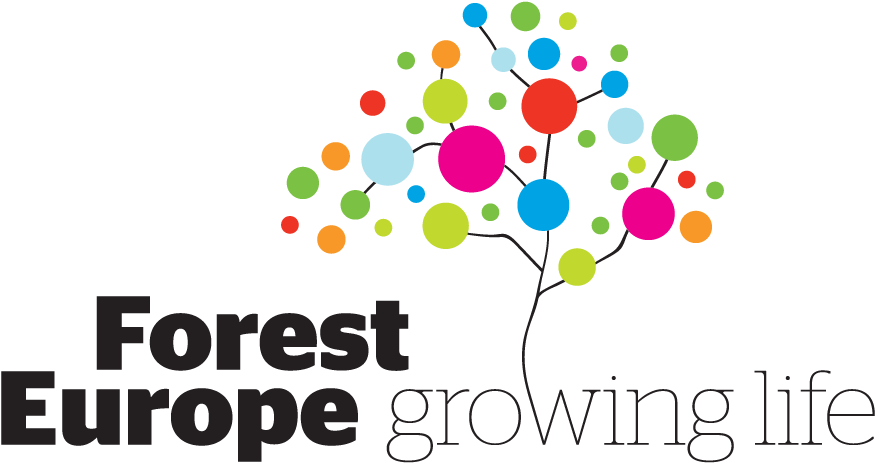 Kick-off meetings of FOREST EUROPE Expert Groups
Kick-off meetings of FOREST EUROPE Expert GroupsFollowing the outcomes of the 7th FOREST EUROPE Ministerial Conference (Madrid, Spain, 20-21 October 2015), the Expert Level Meeting held in Bratislava on 11-12 May 2016 approved FOREST EUROPE Work Programme for the period 2016-2020. According to FOREST EUROPE Work Programme Actions, expert and advisory groups were established as ad hoc mechanisms with the purpose of advancing implementation of the FOREST EUROPE Work Programme on specific subjects of technical, scientific or political nature. Kick-off meetings of two of them will be held in January 2017.
Expert Group on Implementation of the Updated pan-European Indicators for Sustainable Forest Management (SFM) will enable dialogue and mobilise expert forum for further development of Criteria & Indicators and their use as a tool for SFM. The Expert Group should analyse how the C&I for SFM have been used and their linkages to other initiatives, to identify and analyse the need in other sectors for forest information and indicators, and prepare a proposal for subsets of indicators to this end. The kick-off meeting will be held in Zvolen, 24 – 25 January 2017.
Expert Group on Green jobs, Education and Training systems was established in order to carry on the dialogue and mobilise expert forum for exchanging experiences in education and training systems, in particular on requirements for new skills for forest workers, forest managers and forest owners in the context of green economy and forest based bio-economy as well as other requirements for green jobs in the forest sector. The Expert Group should therefore focus on best examples of policies and policy tools to strengthen employment in the forest sector including environmental and social aspects of these jobs. Moreover, the group should also aim at mechanisms for identification of new skills including cross-sectoral approaches in this field. The collection of best examples should be subsequently presented at a workshop and later serve as a base for development of pan-European guidelines for promotion of green jobs in the forest sector. The kick-off meeting will be held also in Zvolen, 25 – 26 January 2017.
More information about expert groups can be find on FOREST EUROPE newly redesigned webpage www.foresteurope.org.
Line (copy 20)
UGA Harley Langdale, Jr. Center for Forest Business Announces 2017 Timberland Investment Conference
March 1-3, 2017, Ritz Carlton, Amelia Island, Florida, USA
The University of Georgia Harley Langdale, Jr. Center for Forest Business announces the opening of Conference Registration for its 2017 Timberland Investment Conference. This international timberland investment conference will be held March 1-3, 2017 with an optional field tour February 28. Please use this direct link http://www.ugacfb.com/timberlandasset/registration/ to register through the UGACenter for Continuing Education, or use this link http://www.ugacfb.com/timberlandasset/ to the conference website and choose the Registration option.
Our theme is Growing Value and we will emphasize the underlying importance of markets and trade for timberland investors no matter where they are. Presentations will focus on the importance of manufacturing markets for forest products and international trade. Attendance is expected to exceed 600 for this meeting of international investors, public and private fund managers, TIMOs, REITs, family offices, funds of funds, attorneys, banks, lenders, consultants and forest industry.
March 1-3, 2017, Ritz Carlton, Amelia Island, Florida, USA
The University of Georgia Harley Langdale, Jr. Center for Forest Business announces the opening of Conference Registration for its 2017 Timberland Investment Conference. This international timberland investment conference will be held March 1-3, 2017 with an optional field tour February 28. Please use this direct link http://www.ugacfb.com/timberlandasset/registration/ to register through the UGACenter for Continuing Education, or use this link http://www.ugacfb.com/timberlandasset/ to the conference website and choose the Registration option.
Our theme is Growing Value and we will emphasize the underlying importance of markets and trade for timberland investors no matter where they are. Presentations will focus on the importance of manufacturing markets for forest products and international trade. Attendance is expected to exceed 600 for this meeting of international investors, public and private fund managers, TIMOs, REITs, family offices, funds of funds, attorneys, banks, lenders, consultants and forest industry.

Line (copy 21)
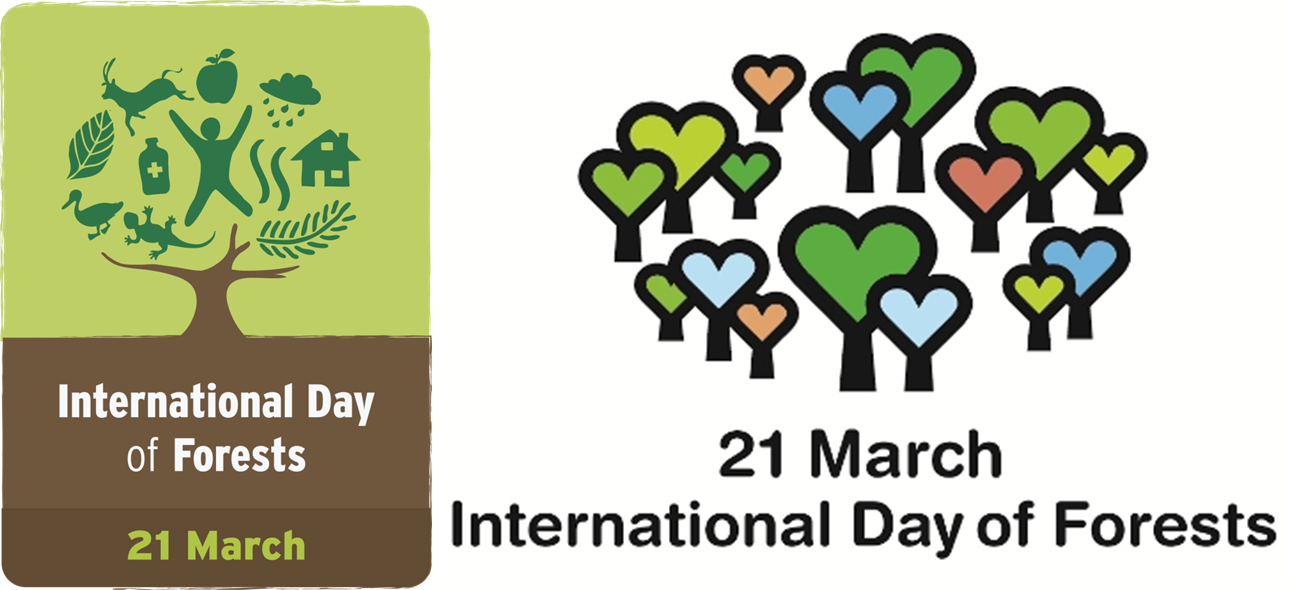
Line (copy 22)
5th Mediterranean Forest Week
One of the important regional initiatives co-organized by Silva Mediterranea http://www.fao.org/forestry/silva-mediterranea/en/ is approaching. The 5th Mediterranean Forest Week will be held from March 20th to 24th, 2017 in Agadir (Morocco) and will be devoted to the restoration of forests and landscapes in the Mediterranean. http://www.carfu.org/?p=787
Registrations will open soon; website of the 5th Mediterranean Forest Week can be visited to stay aware of the latest information. http://www.5.medforestweek.org/
One of the important regional initiatives co-organized by Silva Mediterranea http://www.fao.org/forestry/silva-mediterranea/en/ is approaching. The 5th Mediterranean Forest Week will be held from March 20th to 24th, 2017 in Agadir (Morocco) and will be devoted to the restoration of forests and landscapes in the Mediterranean. http://www.carfu.org/?p=787
Registrations will open soon; website of the 5th Mediterranean Forest Week can be visited to stay aware of the latest information. http://www.5.medforestweek.org/
Line (copy 23)
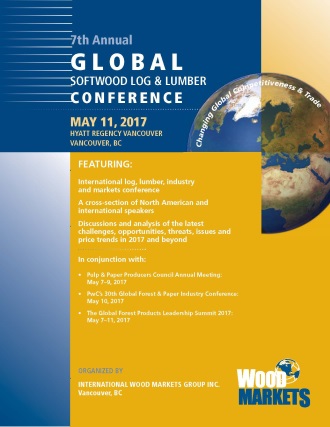 MARK YOUR CALENDARS!
MARK YOUR CALENDARS!7th Annual Vancouver
Global Softwood Log & Lumber Conference
- Hyatt Regency Hotel Vancouver - May 11, 2017
- Visit our website for all information and updates
https://www.woodmarkets.com/conference/conferences-vancouver/2017-global-softwood-conference
New perspectives and outlooks on exporting regions and key markets to help you better understand new opportunities, evolving issues and possible threats to the commodity log and wood products trade (including foreign exchange risks).
In conjunction with:
· Pulp & Paper Producers Council Annual Meeting May 7-9, 2017
· PwC's 30th annual Global Forest & Paper Industry Conference - May 10, 2017
International WOOD MARKETS Group Inc.
Line (copy 24)

Season's greetings
Meilleurs vœux
С наилучшими пожеланиями
Dear Delegate, dear Participant,
The UNECE/FAO Forestry and Timber Section sends you their best wishes for a healthy, happy and successful 2017. We take this opportunity to also thank you for your interest, support and contribution to our work.
We look forward to working with you in 2017!
Roman Michalak - Ekrem Yazici - Florian Steierer - Alicja Kacprzak - Alex McCusker
Matt Fonseca - Karen Taylor - Claudia Trentini - Theresa Loeffler - Marion Briens
Anna-Katharina Coker - Robin Völker - Muwaz Ahmed - Yulia Bunina
How to contribute? Deadline to provide contributions to the next issue is 15 March 2017. Please note that the editing of the texts is on the responsibility of the contributors. More information and the previous issues are available here.
We work in Collaboration with the Global Forest Information Service.

